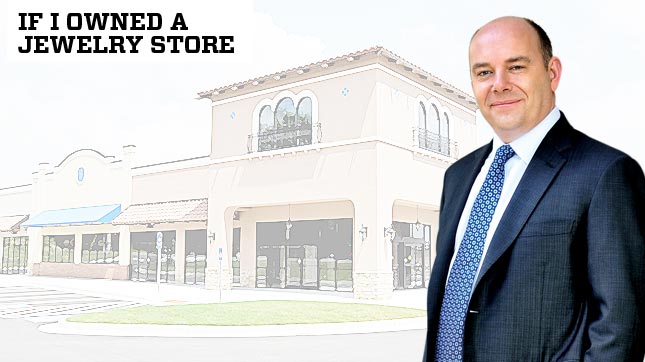If I Owned A Jewelry Store: Stephen A. Wilson

Complexity expert and author wages war on bloated processes and shopping environment sameness.
BY THE INDESIGN TEAM
Published in the July/August 2012 issue
Customer experiences stay with you. I recall in the early 1990s walking into a bookstore and browsing in the aisles — an activity that sounds quaint today. I was flipping through the pages of a particular book when a salesman walked up to me and stopped a few feet away. He looked right at me.
“You are going to buy that book, I assume?” he said.
It felt wrong. I felt maligned. I put the book down, walked out of the store, and never went back. That particular chain of bookstores was out of business a year later, an illustration of what happens when the world shifts and customers get new choices.
Advertisement
And the world is shifting. We see this across industries: a few companies make the leap to new customer behaviors, industry realities and emerging opportunities, while others are caught flat-footed. Few predicted the success of Blue Nile, who informs its customers on its homepage: “You’re too smart to shop in a jewelry store.” The point is, if you expect tomorrow to be the same as yesterday — and your business strategy is anchored around that sentiment — then I’d suggest the following: Wake up, as your very existence may be at stake.
So if I owned a jewelry store, I’d start by doing my very best to conjure up an atmosphere of urgency and then focus on answering a few key questions:
1Do we really know who our customers are, and have we designed the store visit around them? The worst situation, and the most common, is when companies think they know their customers but really don’t. A fashion retail chain that we know liked to think that its customers were college-age; stores saw that the age group was significantly younger. The misalignment meant that to drive sales, the store managers were forced to run “rogue” back-to-school events. Ask yourself if you really know who your customer is, then tailor the experience around them.
2How are we different from everybody else? Take a walk on New York’s Fifth Avenue, and within a five-block radius, you can hit all the big stores. Good luck finding something outside traditional jewelry retail parameters: little product signage, a hushed environment and inaccessible salespeople. Different store brands, to be sure, but little differentiation in the customer experience or the area of focus. Harvard Business School Prof. Cynthia Montgomery has another way of phrasing this: “If you disappeared tomorrow, would your customers miss you?” Given a retail landscape cluttered with generalists, the question may be: What do you want to be known for?
3Are we “lean” in the right places, in order to allow more time and investment in the customer experience? Many retailers are drawn to the industry for the customer interaction. But it’s critical to ensure you’re set up for success in terms of the operating basics: the buying, the supply chain, the merchandizing and marketing. Focus on being “lean” in areas the customer can’t see. Inventory is a great example, where a focus on tight management of the supply chain and working capital can be a competitive advantage and ensure you’re staying cash-flow positive while not pushing stale merchandise onto uninterested customers. And “process” is not the enemy of “customer service” — just the opposite. The leaner your processes are, the more time and resources you have to dedicate to customers.
4What does “radical” look like in jewelry retail? If you were starting with a clean sheet, what would your retail experience look like? 100 percent trunk show? Buying clubs? Pop-up stores? Online only? Perhaps it would change your segment focus or how you merchandize. Question the status quo and don’t be trapped by the constraints of where you are today.
Advertisement
It’s hard to think revolutionary thoughts when faced with day-to-day operational realities. But we all need to be ready for the prospect of disruptive change. Jewelry retail is, by and large, an industry of tradition. But the experience of other retail sectors shows us that tradition is no defense against customer shifts and innovation.
Stephen A. Wilson a is managing partner with Wilson Perumal & Company, a strategy consultancy, and co-author of Waging War on Complexity Costs and Conquering Complexity in Your Business (both published by McGraw Hill). He has a decade of experience advising senior clients in the U.S. and Europe on issues relating to operations and strategy, and can be reached at swilson@wilsonperumal.com.